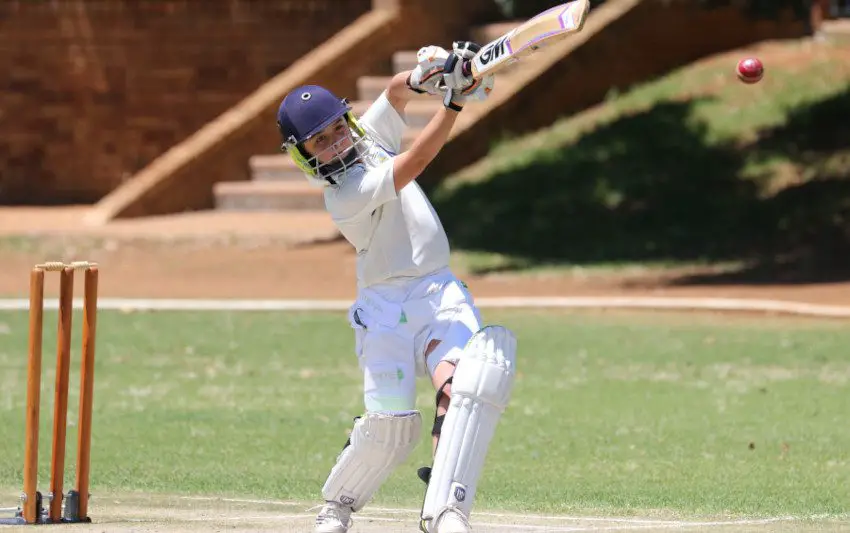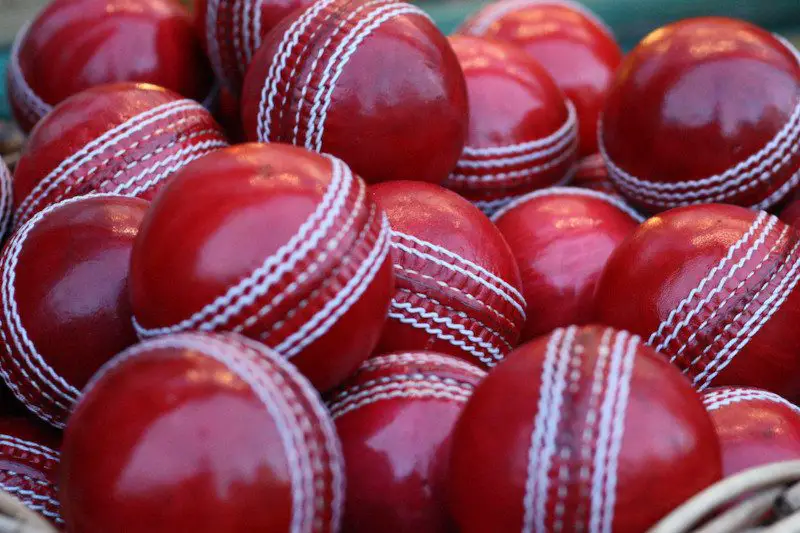Table of Contents
In cricket, players’ protection is very important. Cricket gloves are one such piece of protective gear that is used by the players while batting and wicket keeping. There are a variety of gloves available, and the players can choose the type of gloves that they feel are most suitable.
There are 3 main types of cricket gloves – batting gloves, wicketkeeping gloves and inner gloves. The main use of cricket gloves is for grip enhancement and shock absorption. They also provide comfort, blister prevention, and protection from heat. You are advised to check the padding, webbing, and straps before deciding on a suitable cricket glove.
Cricket Batting Gloves
Let’s take a look at the cricket batting gloves in details.
Traditional Batting Gloves vs Modern Batting Gloves
Cricket Batting gloves are typically categorized into two types. – Traditional Batting Gloves and Modern Batting Gloves. Modern batting gloves have finger cuts, but traditional gloves do not. Traditional cricket gloves have a single full-length finger pad. They often contain cotton as their filling, which makes them naturally heavy.
Modern batting gloves are more flexible and provide additional hand protection. A combination of flexibility, sensation, and ventilation might be seen as comfort. Modern gloves are also available in conventional shapes, but because they are filled with foam, they are naturally lighter.
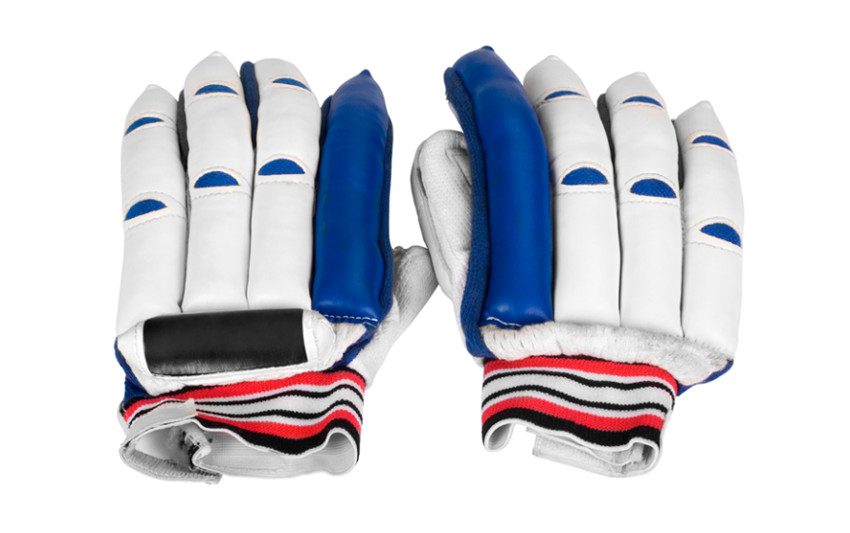
Sausage Finger vs Split Finger
The sausage design finger glove uses thick, continuous padding on each finger, it often offers better protection than its multi-piece version. The absence of gaps when the hand is wrapped around a cricket bat handle is the main benefit of this type of design. These types of gloves are usually used in conditions with high bounce and pace.
Split Finger Cricket gloves are one of the oldest finger gloves that have been in use since the 90s. These gloves are mostly used by players in the Indian subcontinent. These kinds of gloves are most suitable for wristy players, as they provide flexibility and ease of movement while playing on spin-friendly tracks.
Parts of Cricket Batting Gloves
The material used for the palm and finger padding of a batting glove is what makes it unique. The feel of the batting gloves’ materials, especially the material in touch with the hand’s palm, might provide comfort while required to bat for extended durations. Cricket batting gloves feature various materials for the palm and finger coverings.
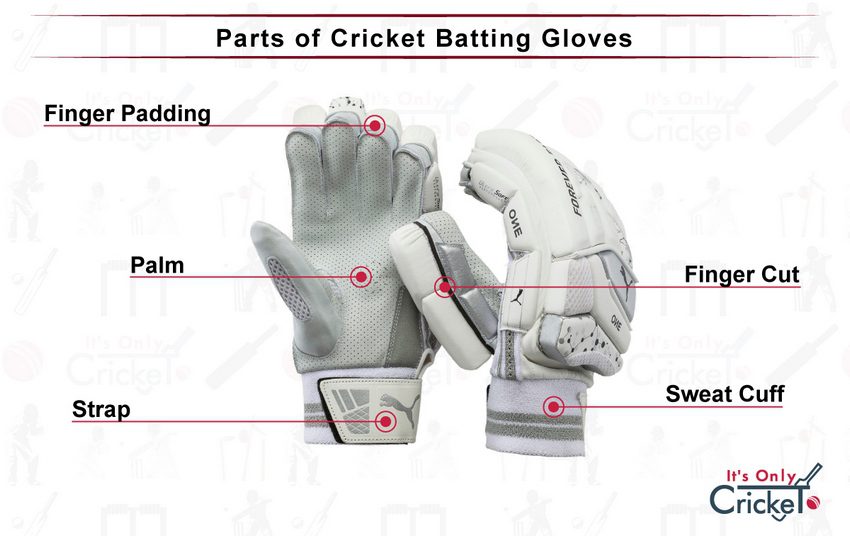
Finger Padding
Foam and cotton are the types of materials that are used in the finger padding of batting gloves. Despite being lightweight, foam offers the same level of protection as cotton padding. You can better hold the bat due to the finger cutouts, which add extra wrap around the handle. In general, cotton padding is less expensive than foam from a financial standpoint. Additionally, novices utilize cotton padding more often.
Finger Cuts
The finger-cut batting gloves have a sliced finger that provides a better sensation through the fingers on the bat handle and are utilized for extra support or for people who sweat a lot inside the batting gloves.
Palm
Cricket batting gloves with leather palms provide more comfort and feel while maintaining a high degree of durability. The least expensive material for cricket batting gloves is cotton palm. Your hands may feel chafed after playing for an extended period.
Straps
The straps are used to give a better grip for the players while holding the bat. The straps also reduce palm abrasions and create a seamless feel for the batsman.
Sweat Cuff
Sweat Cuff are indeed incredibly comfortable and light, allowing you to swing your bat freely at the crease. They are made of a fine cotton fabric that is very absorbent. sponge cushioned palm for greater grip and additional protection. Full velour leather palm.
Cricket Wicket Keeping Gloves
The catching surface of wicket keeping gloves is often composed of rubber and contains traction-improving characteristics like spikes. To minimize the ball’s impact, soft padding material is fixed beneath the catching surface. On the anterior surface, a protective padded cuff covering the wrist region is also present, although it is normally leather-encased and does not provide a catching surface.
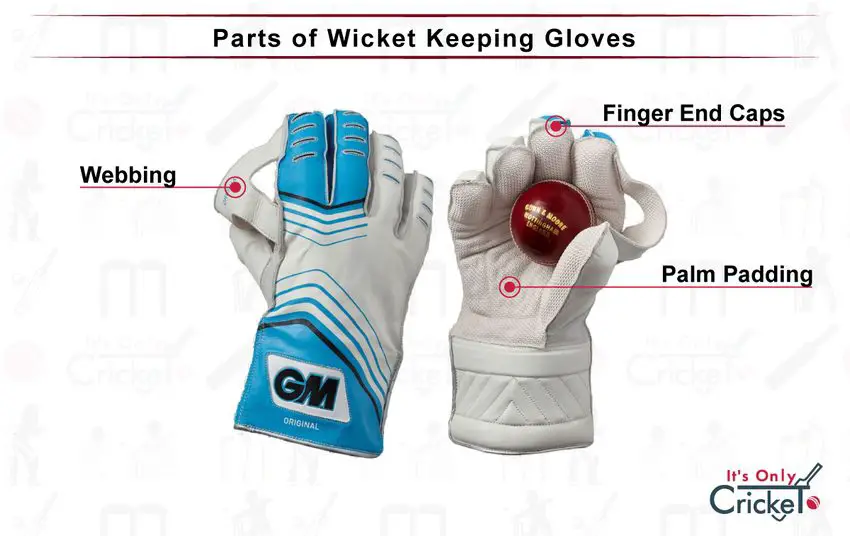
Palm Lining
The part of the wicket-keeping glove that comes into contact with the hand’s palm is called the palm lining. The lining of the wicket-keeping glove must be soft and pleasant since it sits just beneath the region that will be utilized to catch the cricket ball most frequently. This will help prevent excessive rubbing and chaffing. Leather and cotton are both utilized in the palm lining.
Palm Padding
The palm padding in wicket-keeping gloves is vital for giving you the best impact protection possible by reducing the force that passes through the gloves and onto your hands, protecting you from harm.
With the shock-absorbing properties helping to slow down the ball and lessen the likelihood of the cricket ball bouncing out of your hands, the padding is also crucial to executing a successful catch. Leather and synthetic materials are employed in the cushioning of the palms.
Finger End Caps
The ends of the fingers, which are the most frequent places for wicket-keepers to sustain injuries, are protected with finger end caps. The end caps are cylindrical items with an opening at one end that are attached to the ends of all five glove fingers and are made to fit over the tips of your fingers. Finger end covers, which are made of PVC or a rubbery substance, will take the brunt of any glancing strikes.
Webbing
The material linking the index finger and thumb on a wicket keeper’s glove is called the “webbing,” and it adds more surface area for catching the ball.

Cricket Inner Gloves
Both the wicket-keeper and the batsman wear inner gloves in cricket. Cricket wicket keepers are required to wear inner gloves, even though many cricket batsmen choose not to. The first line of defence between your hands and your wicket-keeping gloves will be a pair of inner gloves, which provide better shock absorption and a tighter fit. The palms of inner gloves are made of various materials.
Cotton
Simple cotton gloves, called “cotton inner gloves,” provide a better fit and moisture management.
Cotton Padded
Simple cotton gloves with additional padding on the fingers and palm for better fit enhanced moisture regulation, and increased shock absorption are known as Cotton Padded Inner Gloves.
Conclusion
Cricket gloves are one of the key protective gears for every player who plays the game of cricket. The players must be aware of the types of cricket gloves that are available and which gloves suit them the best and the types of gloves that must use to achieve better results on the field.

